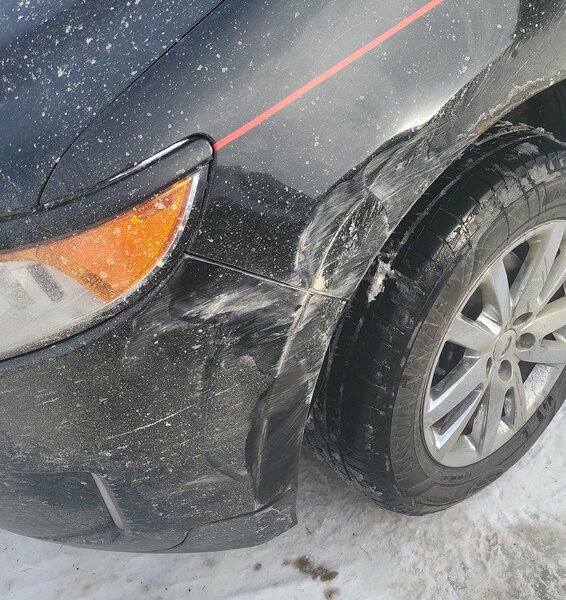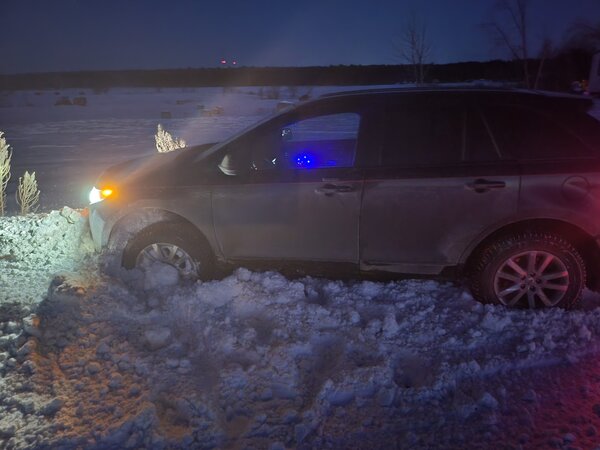-
Images
-
Popular Contributors
-
Posts
-
TECHNICAL SERVICE BULLETIN Misfire With DTC(s) P0301, P0302, P0303, And/Or P0304 Stored In The PCM 25-2074 06 March 2025 This bulletin supersedes 24-2384. Reason for update: vehicle models affected Model: Ford 2025 Bronco Engine: 2.3L EcoBoost 2023-2025 Escape Engine: 1.5L EcoBoost Engine: 2.0L EcoBoost 2025 Explorer Engine: 2.3L EcoBoost 2024-2025 Mustang Engine: 2.3L EcoBoost 2025 Ranger Engine: 2.3L EcoBoost Lincoln 2023-2025 Corsair Engine: 2.0L EcoBoost 2024-2025 Nautilus Engine: 2.0L EcoBoost Engine: 2.0L EcoBoost Hybrid Markets: North American markets only Issue: Some of the vehicles listed in the Model statement above may exhibit an engine misfire condition with DTCs P0301, P0302, P0303 and/or P0304 set in the PCM. Action: For vehicles that meet all of the criteria in the Issue and Model statements, follow the Service Procedure to diagnose the vehicle. Warranty Status: Information Only. Repair/Claim Coding Causal Part: IN Condition Code: -1 Service Procedure NOTE: This article is for information only. Determine the causal part number and use available labor times in the SLTS Manual or claim M-time in accordance with the Warranty and Policy Manual, do not use this article number as the M-Time labor operation. Causal part number IN in this article refers to the information only status and is not able to be claimed. 1. Remove and inspect the condition of all spark plugs. Refer to the WSM, Section 303-07. Are any spark plugs damaged? (1). Yes - proceed to Step 2. (2). No - this article does not apply, replacement of the spark plugs is not necessary, proceed with normal diagnostics found in the WSM. 2. Inspect the 12v battery positive and negative terminals for a loose condition, refer to WSM, Section 414-01 and repair as necessary. 3. Inspect all PCM ground circuitry for loose connections and/or high resistance and repair as necessary. 4. Use a borescope to inspect the condition of the affected pistons and cylinder walls. Refer to Figures 1-3 for examples of normal cylinder wall wear and Figures 4-5 for examples of damaged cylinder walls. Additional examples of engine wear can be found in the Engine Failure Analysis GSB > Cylinder Wall and Piston Skirt Inspection. Do the pistons and/or cylinder walls appear to be damaged? Figure 1 - Showing normal cylinder wall wear Figure 2 - Showing normal cylinder wall wear Figure 3 - Showing normal cylinder wall wear Figure 4 - Showing a damaged cylinder wall Figure 5 - Showing a damaged cylinder wall (1). Yes - remove the cylinder head to perform a more detailed inspection of the suspect damage. Refer to the Engine Failure Analysis GSB > Cylinder Wall and Piston Skirt Inspection and repair as necessary. For cylinder head removal, refer to the WSM, Section 303-01. (2). No - perform a compression test and cylinder leakage test following WSM, Section 303-00 and repair as necessary. 5. Replace all damaged spark plugs. Do not discard the damaged spark plugs so Ford can retrieve them following the warranty parts return process. 6. Submit a GCR and include photos of damaged components, images from the borescope analysis and anything else of interest that was found during the repair. These images will help improve engine quality for future model vehicles. (1). Do not use the Report A Problem link to submit the GCR. © 2025 Ford Motor Company All rights reserved. NOTE: The information in Technical Service Bulletins is intended for use by trained, professional technicians with the knowledge, tools, and equipment to do the job properly and safely. It informs these technicians of conditions that may occur on some vehicles, or provides information that could assist in proper vehicle service. The procedures should not be performed by "do-it-yourselfers". Do not assume that a condition described affects your car or truck. Contact a Ford or Lincoln dealership to determine whether the Bulletin applies to your vehicle. Warranty Policy and Extended Service Plan documentation determine Warranty and/or Extended Service Plan coverage unless stated otherwise in the TSB article. The information in this Technical Service Bulletin (TSB) was current at the time of printing. Ford Motor Company reserves the right to supersede this information with updates. The most recent information is available through Ford Motor Company's on-line technical resources. TSB 25-2074 - Misfire With DTCs P0301, P0302, P0303, And-Or P0304 Stored In The PCM - 03-06-2025.pdf
-
I gave up on the Ford parts, both original and updated. I use TOGGLER TC wall anchors. I cut off enough of the vertical fins, that help grab drywall, to allow the toggle to go through a 3/8 inch fender washer. I hot glued 1" OD x 1/2" tall x 1/2" ID nylon spacers (McMaster #94639A876) to the inside of the covers. I inserted the toggler where the old Ford part was and then used the toggler tool to set the toggle. I did this two years ago and all are sill holding strong.
-
I have an aspirated 3.5. 7.5k is the recommended interval, although I usually add a quart around 6k miles.
-
@chr8990 My schedule is much the same. • Oil - Full Synthetic (5k) - same • Brake Fluid (40K) - 2 years • Transmission Flush (30K) - 45K • Coolant Flush (45K) - 2 to 3 years • Spark Plug replacement/Tune Up (45K) - same • PTU (30K) - same • RDU (30K - same time as PTU) - same • I have a catch can on mine - I have the same JLT catch can
-
This is my maintenance schedule: • Oil - Full Synthetic (5k) • Brake Fluid (40K) • Transmission Flush (30K) • Coolant Flush (45K) • Spark Plug replacement/Tune Up (45K) • PTU (30K) • RDU (30K - same time as PTU) • I have a catch can on mine: https://www.jlosc.com/jl-3-0-oil-separator-passenger-side-2015-2020-edge-sport-st-lincoln-mkx-2-7l-ecoboost/ • I'll still have the dealer do a The Works Plus Package that includes a treatment of BG 44K once every 3 oil changes
-
@Przemo I replaced those fasteners on my 2017 Sport and after a few months the rattle was back.
-
Thank you for yours help. It turned out that I had the lower cover mounts https://www.sklep.autohobby.pl/product-pol-13355-KOLKI-MOCUJACE-OSLONE-PODWOZIA-EDGE-2015-_-2209369-_-H2GB-19E524-AA.html?gad_source=1&gclid=Cj0KCQjwna6_BhCbARIsALId2Z2mAsocDAiFzBL7hIoydybkckAqeI76La0JTD9s9NudD-TbHbDq1I4aAg1iEALw_wcB
-
Seems like going 7.5k on oil changes is pushing it. I do mine at 4-4500. I am using OEM semi synthetic as recommended by the dealer. The dealer did say using full synthetic would allow me to go longer on the interval. I think the turbochargers are dependent on good clean oil. Just my thoughts.
-
It's worth noting that a visit to the dealership is required for correction, and that no impending OTA update is mentioned as an alternative remedy. Thanks, Bunky!
-
Just had the torque converter replaced at 48,000 mile on my 2019 Edge. Thankfully I had the Ford ESP to cover the costs. I always had the surge/buck just under 20 mph with the Edge cold from sitting over night driving out of my neighborhood but that would go away as the engine and transmission warmed up. This was different. The shuttering would be as accelerating and would be at the shift points. It was constant even after the Edge warmed up. One thing that concerns me is that as the OP is asking I do not think there was a redesign of the torque converter so I wonder if it will happen again in another 40,000 miles. I looked up the part number for the torque converter and the list of models Ford uses the exact same torque converter on is long. Once the ESP expires in 2 years I will probably trade the Edge for something else. As a side note I just put new tires on the Edge about 2 weeks ago at a cost of over $1,500 so I made the dealer check the wheel alignment after all of the messing with the front end and sure enough the alignment needed to be tweaked.
-
-
Topics










